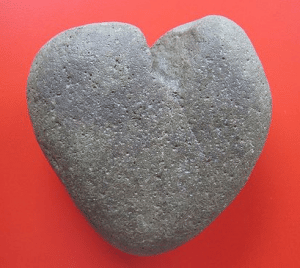
Human as it is to get caught in the cycle of reactivity, we often create greater damage to ourselves, to others, and to our relationships. In order to move from a place of reactivity to responsiveness there are four basic steps. First, we need to disengage from reactivity. In the words of Viktor Frankl, “Between stimulus and response there is a space. In that space is our power to choose our response. In our response lies our growth and our freedom.” So we begin by moving into the space between stimulus and response. We pause and anchor ourselves in the sensation of the breath (or other sensations if the breath is problematic for us). In doing so, we create the possibility of a more stable awareness.
Second, we turn our attention to our own state of being. What is it that was triggered in us, and what is it that we need? Can we choose to respond to ourselves with wisdom and compassion? In doing so, we awaken the possibility of opening to others.
Third, we turn our attention to the vulnerability of the other person. Perhaps considering that we may not know their full story or experience. We begin to tend to them by skillfully listening to what they are saying. Then we broaden our observations to take in the person as a whole. When we open to the experience and vulnerability of the other person, we allow our hearts to melt in response to them.
Fourth, we turn our attention toward choosing our response. We remind ourselves of our values and we choose to respond in a way that has integrity for us. Our response is then rooted in both wisdom and compassion.
One way I like to think about this is the practice I call STOP & LOVE.
To tend to ourselves we begin with the STOP practice:
S – Stop. Remember to pause. We begin breaking through reactivity by slowing down, pausing, and making space for something new to happen.
T – Take a breath. Actually, take a few breaths. Let everything else rest in the background as you privilege your awareness on the sensation of breathing. Anchoring our awareness in the breath gives us the chance to anchor in this moment and this body.
O – Observe. What is happening here in this moment, and this body? Notice the thoughts, emotions and sensations present. No need to change them in any way. Just notice them. Allow the attention to broaden a bit to fully take in what is happening right now. Given your new perspective, perhaps asking yourself, “What do I need right now?”
P – Proceed to Practice. Now that you have a better understanding of what is happening, and what you need, see if you can find a way to honor your needs. Perhaps STOP was all you needed, or maybe you need to take a walk, have tea, sit in meditation. Maybe there are some words you need to hear. Can you say them to yourself now? The point is to give ourselves what we need to move out of the state of reactivity and into a state of responsiveness. Tending to our true needs, rather than reacting from whatever place was triggered in us is the key.
Now that we are in a state of responsiveness, we turn our attention to the vulnerability of the person in front of us with LOVE.
L – Listen. This means letting go of ourselves, our vision of how things are or should be, our being right or wrong, good or bad. Let these things rest in the background and really listen to what the other person is saying. What is their perspective, their truth? What is it they want us to know? When we truly open to taking in what the other is saying, we allow ourselves to be touched and moved, to learn things we didn’t know. Listening is both an act of generosity and an act of love.
O – Observe. Taking in the other’s experience requires more than just hearing the words they are saying. What is the tone of the words? What does the body look like? Are there tears? A hot red face? A look of fear? As we listen to this person we might notice the state they are in. Do they seem scared, angry, lonely, or sad? If we know them well, we might also know this to be a core pain they carry and we can deepen our understanding of the vulnerable situation they are in. We can remember that, just like us and all beings, this person wishes to be happy and free from suffering. We allow our hearts to be touched by the state of the other. We see more clearly what the other person needs.
V – Values. It is helpful to pause here, to remember our own core values. Whenever we take in the vulnerability of another, we have a choice in how we will respond to them. Grounding that choice in our core values allows a wise and compassionate response. If this is a loved one, we might remember that. We might remind ourselves of how important it is to us that they feel safe and loved, free from harm. We can remember how we wish all beings be happy and free from suffering. We might remember our own values or even vows to be compassionate, courageous, kind, or whatever they may be. We pause and ground ourselves in our own values and vows, and then it becomes clearer which actions are in alignment with what is deeply meaningful to us. Grounding in this way allows our response to be guided by wisdom.
E – Express. This is the action part of compassion. When we have deepened our understanding of ourselves and the other person, and allowed wisdom and compassion to arise, it often becomes much easier to know how to respond now. What do we need to say, or not say? Is there a gesture that would be helpful? A smile, eye contact, a pat on the back or a hug? Perhaps the most compassionate thing we can do is to say “no”, or otherwise set a boundary. Or maybe it is to remind them of their importance to us. Often, letting the other know that we see and value them is the most loving thing we can do. Trust your own response and follow through by expressing whatever is needed right now.
That’s the practice of STOP & LOVE. With just a little space and responsiveness, we can find relief by allowing things to be as they are, allowing our loved ones to be as they are, and finding a way to be our best self whatever conditions we find ourselves in. May you find the way to be true to yourself and relate to others with wisdom and compassion.
© Michelle Becker, WiseCompassion.com




